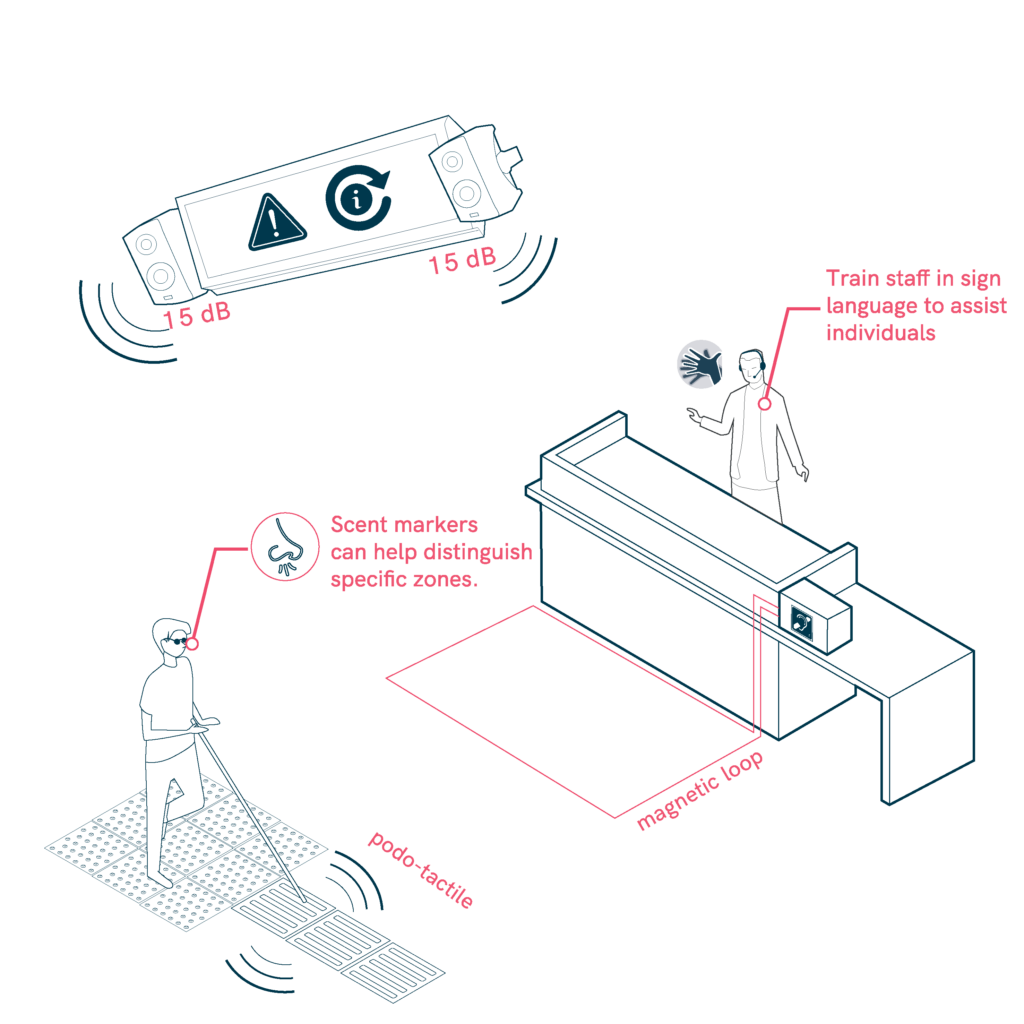Multisensory Wayfinding
To optimize cognitive accessibility in built environments, implement multisensory wayfinding systems that facilitate seamless navigation and environmental comprehension. These measures, aligned with universal design principles, reduce cognitive load, mitigate navigational stress, and ensure diverse user groups can interact with the environment safely, efficiently, and autonomously.

- Ensure sound frequencies and intensities are within an audible range that is not disruptive, considering users with hearing aids. Use an attention signal before the main message to alert users.
- Implement technologies like magnetic loops, infrared systems, or FM equipment at counters or windows, while managing potential interference with nearby installations.
- Train staff in sign language to assist individuals who are deaf or hard of hearing.
- Minimize background noise to ensure that audible messages stand out, with sound levels exceeding ambient noise by at least 15 dB.
- Auditory beacons and podo-tactile pathways, including braille signage and textured elements, guide individuals with visual impairments.
- Scent markers can help distinguish specific zones.
- Real-time updates on digital displays or signage ensure information is current and relevant.
Sources
- https://accessible-eu-centre.ec.europa.eu/content-corner/digital-library/en-172102021-accessibility-and-usability-built-environment-functional-requirements_en
- https://www.access-board.gov/adaag-1991-2002.html#2.%20GENERAL
- https://universaldesign.ie/built-environment/building-for-everyone/building-for-everyone-full-series
- https://www.codigotecnico.org/pdf/Documentos/SUA/DccSUA.pdf
- https://www.une.org/encuentra-tu-norma/busca-tu-norma/norma?c=N0043689
- https://biblioteca.fundaciononce.es/publicaciones/colecciones-propias/coleccion-accesibilidad/accesibilidad-universal-y-diseno-para
- https://observatoriodelaaccesibilidad.es/wp-content/uploads/2022/05/Guia-de-Accesibilidad-Cognitiva-en-Centros-de-educacion-infantil-y-primaria.pdf
- Carers
- Children
- Cognitive
- Cognitive abilities
- Decolonial perspective
- Digital
- Digital barrier
- Enviroment
- Environmental
- Gender and generations
- Gender perspective
- Hearing impairment
- Low-education
- Low-income
- Older people
- Other
- Physical abilities and features
- Sensory and Physical
- Socioeconomic
- Visual impairment